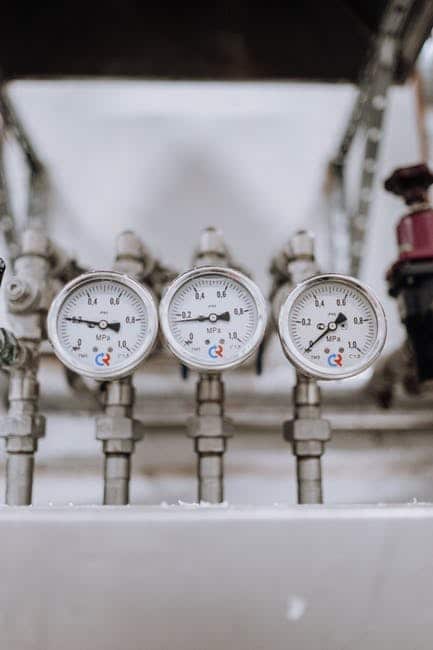Image via Pexels
In a recent article, we talked about why it is so important to choose the right industrial gas valve for your facility. While we focused on the dangers of choosing substandard valves or valves that are incompatible with your existing system, we also touched on selecting the right type of valve for your purposes.
We are going to look at this in more detail in this article as we analyze the different types of valves available to you. While reputable manufacturers such as Sherwood provide valves of high quality, you still need to make sure you are selecting the right valve product for your specific requirements.
Ball valves
Ball valves have an internal ball-shaped component that is used to regulate the flow of gas through the system. On the basic version of the ball valve, a handle is turned through 90 degrees to open and close the valve. Other types of ball valves may include a gearing system to allow easier operation of larger valves.
This type of valve tends to be highly cost-effective, thanks to its simple construction and operation. However, the valve should not be set to a partly open position in a high-pressure gas system as the high-velocity movement of the gas can accelerate wear and tear on the ball component.
Needle valves
A needle valve regulates the flow of gas through a narrow opening, which is controlled with a thin needle-shaped plunger that blocks or permits the gas’s movement. The valve is particularly useful for achieving a consistent gas flow rate, particularly over longer-term usage.
Valves of this type may not be so suitable for higher-pressure gas systems. This is due to the relatively small diameter of the needle that is used to control the flow, which may become damaged over time when the velocity of the gas increases.
Metering valves
There are other types of metering valves that provide suitable alternatives to needle valves. These may provide a number of advantages, including a reduction in long-term maintenance as they may be more resistant to dirt buildup than the needle version of the valve.
Some types of metering valves are designed for very high-precision control of gas flow. These high-precision calibrations are suitable for low levels of gas flow and low-pressure applications.
Check valves
It’s often critical to ensure that gas flows through a system in only a single direction. Any backward flow of gas is likely to cause inefficiency in the system at best, and it can be highly dangerous in the worst-case scenario. For this kind of usage, a check valve is suitable.
Check valves permit gases to flow in one direction and prevent gas from backing up in the system. It is recommended that these valves be used in conjunction with another kind of shutoff valve, as they are not suitable for deployment as a primary shutoff solution. The check valve is designed as a backup in the event that the primary shutoff valve fails.
Relief valves
Managing the pressure in a gas system is an important part of guaranteeing the ongoing safety of the system. If pressure becomes too great, components can become damaged, reducing the longevity of the system as well as putting you, your teams, and the general public at risk. A relief valve is used to release pressure from the system, making pressure management much easier to accomplish.
The relief valve is connected to an auxiliary part of the system that is used to channel gas away from the main pipework. As many of the gases used in industry are poisonous or flammable, it is not feasible to simply release these gases into the atmosphere. Make sure this auxiliary channel is properly connected before the relief valve is deployed to ensure safe release of pressure.
Regulator valves
A regulator valve contains a mechanism that automatically manages the flow of gas through the system. There are different types of mechanisms that may be fitted within a regulator valve, including spring-loaded, dead-weighted, and pressure-balanced components that react automatically to the gas as it moves through the system, altering its position to achieve a steady flow rate.
Regulator valves may also be fitted with internal relief valves, which provide additional automatic regulation. These internal relief valves, or IRVs, open automatically when pressure reaches a certain level, transferring gas to an auxiliary channel in order to keep the system’s internal pressure within safe parameters.
Stopcock valves
A stopcock valve is a solution with a long history, thanks to its relatively simple construction. This type of valve is fitted with a faucet component that can be turned to open or close the valve itself. There is no internal mechanism for automatic regulation, and the valve requires manual operation if it is to be used effectively.
Stopcock valves are ideal for usage as a manual shutoff solution. However, you may want to deploy other valves, such as needle valves or other regulator solutions, within your system if you are targeting efficient automatic regulation.
Valves for working with different gases
Companies in different industries often find themselves working with different types of gases. Commonly used gases include natural gas, liquefied petroleum gas (LPG), oxygen, chlorine, fluorine, and acetylene. However, if your business is operating in a specialized field, there are many other gases that you may find yourself using on a regular basis.
When you select a valve for your facility’s gas system, you will need to ensure that the component is rated for use with the specific gas you will be working with. The different molecule sizes of different types of gas mean that not all valves can be universally deployed.
Making the right choice – targeting safety and efficiency
The right valve will help you ensure the efficient running of your facility. Even more importantly, it will help make sure that your facility is safe and secure in the long term, making it easy to guarantee regulatory compliance for your business.
